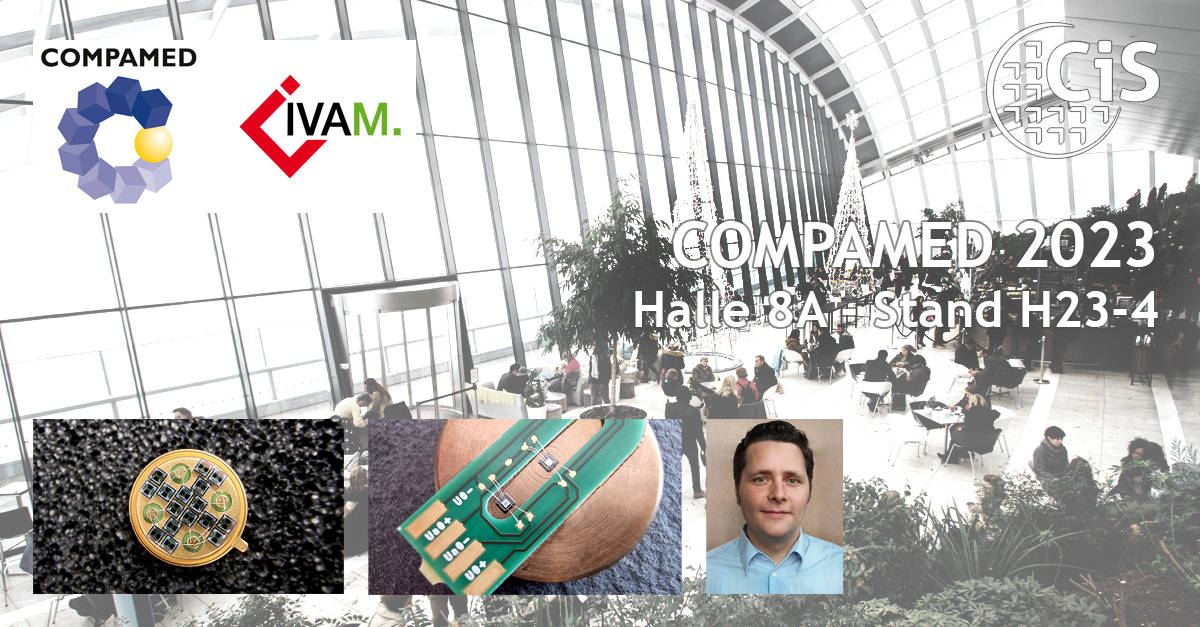From 13th to 16th November 2023, the COMPAMED, the world’s leading trade fair for the medical technology supply sector, will open its doors in Düsseldorf. The CiS Research Institute will be presenting its portfolio of microsensors to international experts at the joint IVAM stand in Hall 8A, booth H23-4.
As part of the COMPAMED HIGH-TECH Forum by IVAM, Dr. Martin Schädel, Business Unit Manager MOEMS at CiS Forschungsinstitut, will present selected research and development results on the topic of “Silicon-based microsensors for medical and life science applications” on Monday, 13th November. The development of silicon-based components for applications in industry, medicine and the environment has been one of the core competencies of the CiS Research Institute for 30 years.
At our booth this year, our focus will be on MEMS (micro-electro-mechanical system) components. In the field of respiratory analysis and lung function, the investigation of various gases such as CO2, CO or alcohol plays a central role. These gases exhibit characteristic light absorption in the IR range. This means that the gas concentrations in a gas mixture can be determined by measuring the decay of the transmitted light of this specific wavelength. This method is known as non-dispersive infrared (NDIR) measurement. A new generation of MEMS emitters consisting of arrays of active surfaces is being developed in the Fast Infrared Emitter Array (FIRE) project. The advantages here are high miniaturization, long-term stability, broader emission spectra and higher dynamics up to 100 Hz.
In addition to breath analysis, the measurement of mechanical variables such as force, pressure and mechanical tension is also a prerequisite for monitoring mechanical loads on prostheses and orthoses as well as recording the direct wear of medical devices. Silicon sensor elements based on MEMS technologies offer advantages over conventional sensors in terms of accuracy, long-term stability, miniaturization and cost efficiency. The CiS Research Institute provides a portfolio of Si strain gauges that have significantly higher K-factors compared to metallic strain gauges, which offers considerable advantages in signal evaluation and sensor placement. With specifically developed assembly and connection technologies, the sensor components can be flexibly mounted and connected on various materials such as metal and ceramic. Customer-specific solutions from prototype to series production can therefore be implemented.
We look forward to meeting you in Hall 8A at our booth H23-4 within the joint stand of the IVAM Association and discussing applications of silicon-based sensor technology in medical technology.
The joint stand of the IVAM Microtechnology Network, the product market under the motto “High-tech for medical products”, focuses on innovations from key technologies such as microtechnology, nanotechnology, photonics and advanced materials.




